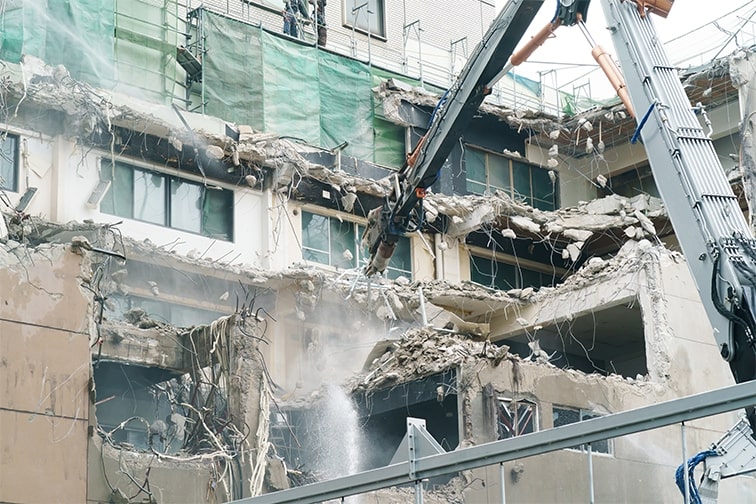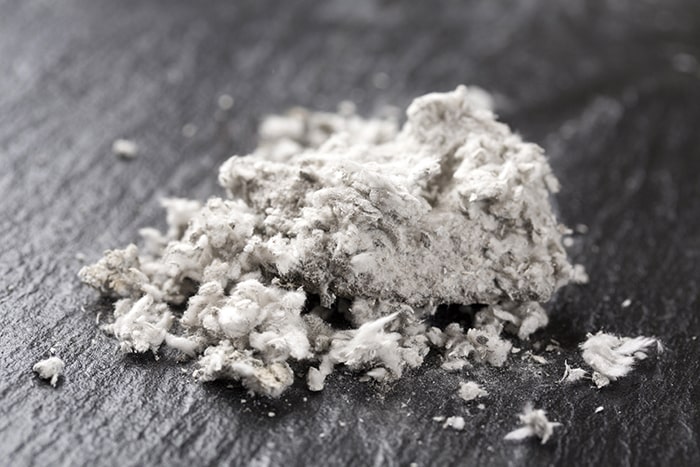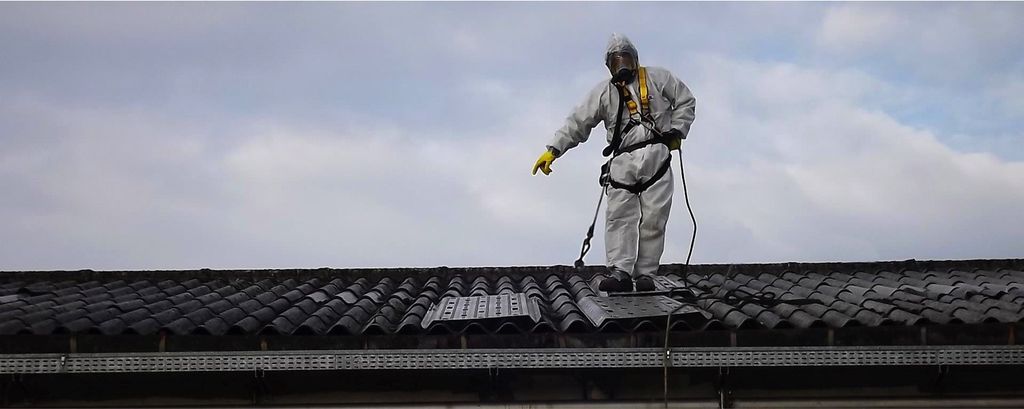However, a homeowner should never shy away from the costs involved in asbestos removal.
ASBESTOS DETECTION
Report / Analysis Report
1950 € HTVA Asbestos certificate report
150 € HTVA per sample
290 € HTVA per sample / certificate 48h
00352 - 27 28 15 38 | mycon@mycon.lu
For decades, asbestos, which is hazardous to health, was used as a building material in various compositions and is now turning out to be an immense disposal problem. Although asbestos has not been allowed to be used and marketed throughout Europe for several years, it can still be found in numerous places, especially in old buildings - this has to do with asbestos's diverse usability in technical applications, its fire resistance and acid resistance as well as other excellent material properties.


In the installed form, asbestos fibres are usually bound. Particularly during weathering, renovation and demolition work, fibres can be released. Even during light renovation work - for example drilling a hole or breaking asbestos insulation boards - asbestos can be inhaled. Even the smallest amounts of very fine asbestos dust pose a high health risk, which is why only specialised contractors should be used for this work and, at best, the entire building should be cleared of asbestos. This is the only way to exclude future risks for residents and workmen.

There are strict legal regulations not only for the renovation, possible demolition work and the final cleaning of buildings or parts of buildings due to asbestos contamination. The regulations must also be observed when handling the asbestos-containing materials after the work - keyword: storage, transport and disposal.
Asbestos waste is packed dust-tight and must be disposed of as hazardous waste. All these factors contribute to the sometimes considerable costs of asbestos removal from buildings. However, renovation work due to asbestos contamination can usually be claimed for tax purposes in the case of owner-occupied real estate if the above-mentioned expert opinion is available before renovation begins. It must be proven that it is an extraordinary burden.
However, a homeowner should never shy away from the costs involved in asbestos removal.
Asbestos removal - Strict legal requirements apply
The use of asbestos and asbestos products has been strictly banned in the entire European Union and Switzerland for several years because of the undoubted health risks. However, a few decades ago, asbestos was still used without hesitation and en masse in the most diverse branches of industry - including the construction industry. Today, asbestos, which is extremely hazardous to health, primarily represents an immense contaminated site and a costly disposal problem.
During demolition, refurbishment and maintenance work (so-called ASI work) on buildings, workers, employees, responsible persons and even residents can come into contact with asbestos fibres, which must be avoided at all costs and can be ruled out if the existing legal safety regulations are observed.
Against the floating danger in buildings
Even though asbestos and asbestos cement products have not been allowed to be manufactured or placed on the market for years, it is not uncommon for some occupational groups to come into contact with asbestos products. This is especially true for workers in the sanitary, heating and air-conditioning trades, since asbestos was frequently used as a building material up to the 1970s and 1980s and beyond, and not only there, due to its excellent technical properties (heat and acid resistance, great strength, best insulation properties). Sprayed asbestos, which was used for insulation and fire protection, is considered particularly dangerous. Spray asbestos is a material/building material that is weakly bonded and can therefore release carcinogenic asbestos fibres very easily.
There is only an actual risk if asbestos fibres are released, but...
Homeowners who want to protect themselves and others from the health hazards of asbestos should not underestimate the possible health risks of remediation. Caution: Under no circumstances should you carry out even minor work or repairs on your own. Apart from the fact that this is also not permitted - this is where most asbestos contamination occurs. In order to be able to better assess the potential danger and clarify a possible remedy, experts must be consulted in the private sector in any case. The first point of contact can be the building authorities and/or environmental authorities at the place of residence. Upon request, they can provide interested parties or those affected with the names of certified experts who can assess the possible risk of asbestos exposure - often, the authorities also have a list of companies that are allowed to remove asbestos.
In the case of a concrete remediation project, a specialised company or company must be commissioned without exception. All asbestos removal work is subject to legal regulations that must be strictly adhered to by the company or firm carrying out the removal. Failure to comply with the safety regulations when removing asbestos sources will otherwise result in criminal prosecution and a far-reaching exclusion of liability under insurance law.
Contact us if you have any questions about asbestos removal.
It is advisable to have a pollutant report drawn up before starting asbestos removal. This involves an expert measuring the asbestos concentrations in the room air and examining individual building components in detail. Based on the results of the expert opinion, a special concept for the remediation of a building is drawn up in order to keep the effort and thus the costs as low as possible. Such expert reports on pollutants, which make the costs of asbestos removal assessable and also provide the client with legal protection, are offered by environmental laboratories or the TÜV.
After the complete removal of all asbestos fibre residues as part of the remediation and the subsequent thorough cleaning of the asbestos-remediated building, prescribed control measurements of the breathing air are carried out. If the exposure limits are not exceeded in the so-called clearance measurement, the building in question can be re-entered and used normally.